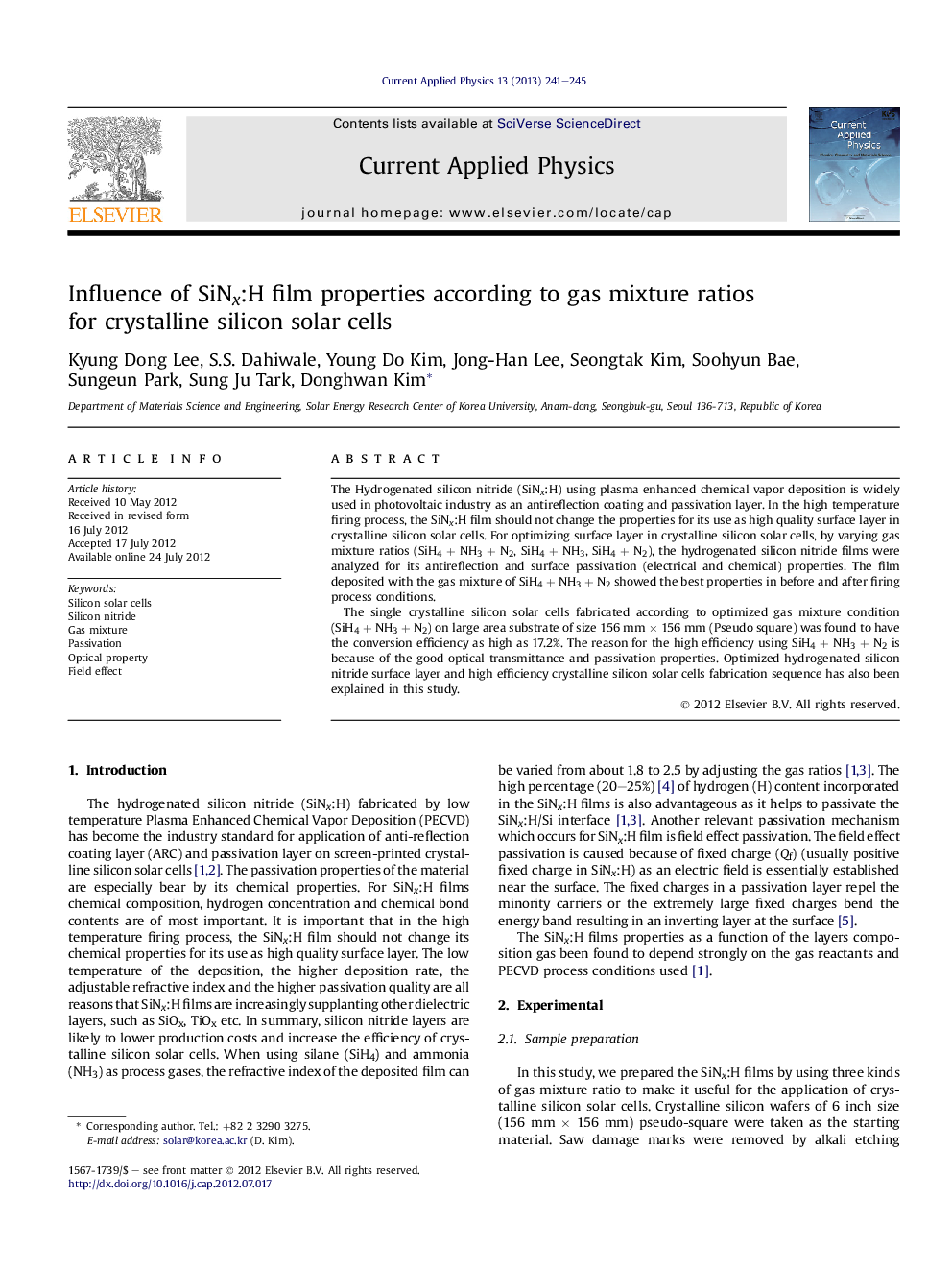| Article ID | Journal | Published Year | Pages | File Type |
|---|---|---|---|---|
| 1786150 | Current Applied Physics | 2013 | 5 Pages |
The Hydrogenated silicon nitride (SiNx:H) using plasma enhanced chemical vapor deposition is widely used in photovoltaic industry as an antireflection coating and passivation layer. In the high temperature firing process, the SiNx:H film should not change the properties for its use as high quality surface layer in crystalline silicon solar cells. For optimizing surface layer in crystalline silicon solar cells, by varying gas mixture ratios (SiH4 + NH3 + N2, SiH4 + NH3, SiH4 + N2), the hydrogenated silicon nitride films were analyzed for its antireflection and surface passivation (electrical and chemical) properties. The film deposited with the gas mixture of SiH4 + NH3 + N2 showed the best properties in before and after firing process conditions.The single crystalline silicon solar cells fabricated according to optimized gas mixture condition (SiH4 + NH3 + N2) on large area substrate of size 156 mm × 156 mm (Pseudo square) was found to have the conversion efficiency as high as 17.2%. The reason for the high efficiency using SiH4 + NH3 + N2 is because of the good optical transmittance and passivation properties. Optimized hydrogenated silicon nitride surface layer and high efficiency crystalline silicon solar cells fabrication sequence has also been explained in this study.
► We focus on SiNx:H film properties for antireflection and passivation quality according gas mixture ratios: i) SiH4 + NH3 + N2, ii) SiH4 + NH3 and iii) SiH4 + N2. ► The analysis of SiNx:H film for all three gas mixture ratios show good anti-reflection and passivation properties, but the best results obtained for SiH4 + NH3 + N2 mixture. ► Supporting chemical properties were quantitatively analyzed by RBS, ERD and FT-IR for better understanding of passivation quality. ► The solar cell data for three gas mixtures ratios is also presented for comparison.
